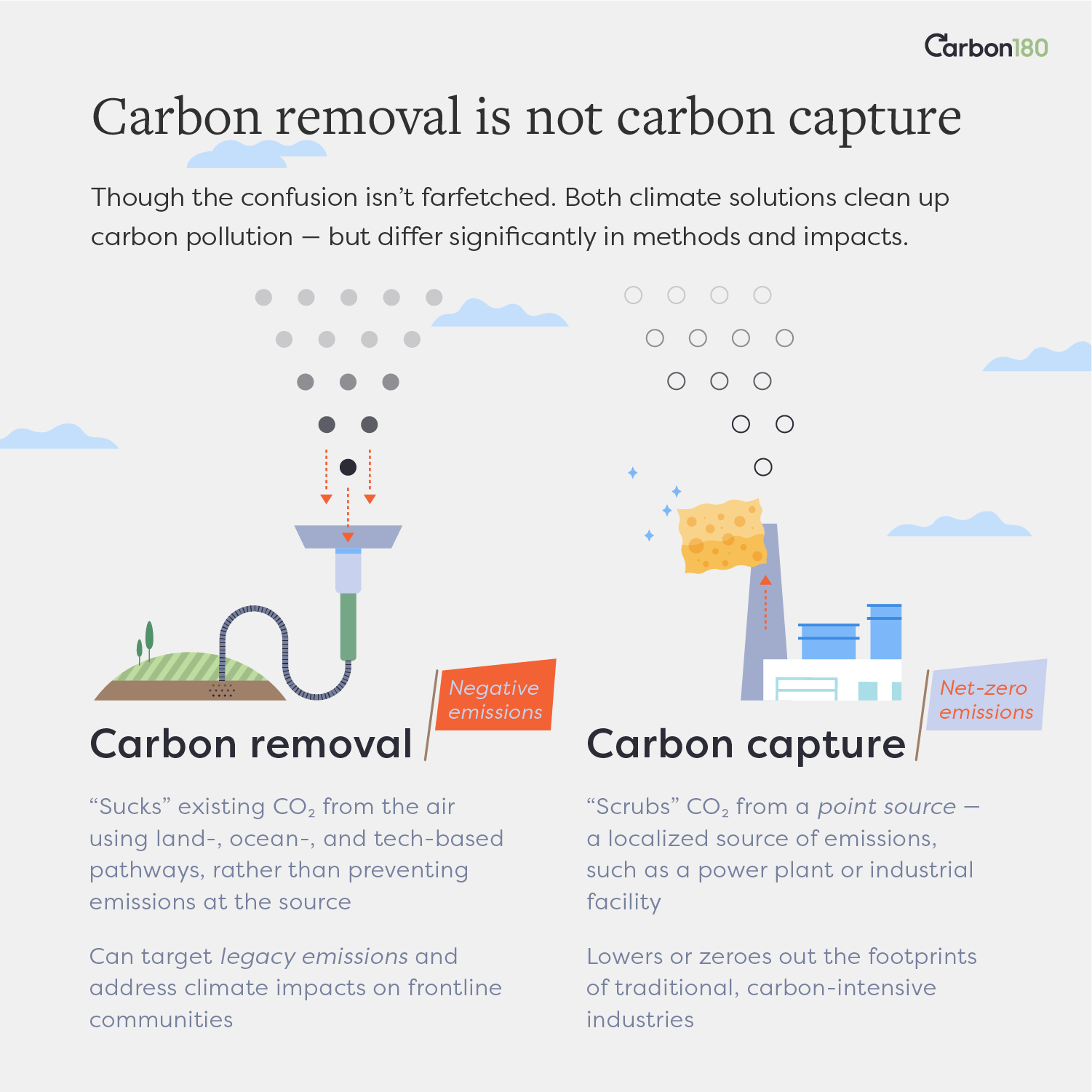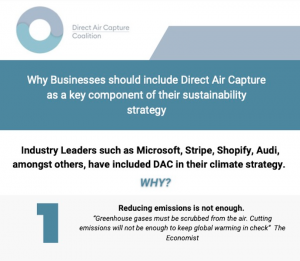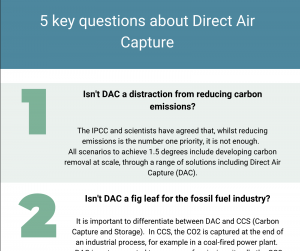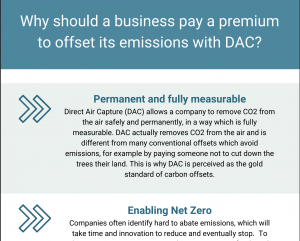Shareable Infographics
What is Direct Air Capture?
Direct Air Capture (DAC) is one way to remove carbon dioxide from the atmosphere. Using a broad variety of chemical and physical processes, DAC technologies extract CO2 from the ambient air – not point sources of emissions – and isolate it, after which the gas may be reused or sequestered in long-term storage. First developed decades ago in small scale air cleaning technology (on submarines and spacecrafts), DAC solutions can today be deployed at industrial levels, acting as a critical tool to address climate change and reduce atmospheric greenhouse gas levels safely and effectively.
How does DAC relate to my ESG and net-zero goals?
Direct Air Capture removes carbon from the atmosphere, offsetting emissions. Supporting carbon removal – or carbon-negative technology – including through the purchase of carbon credits, helps move businesses, individuals, or corporations toward carbon neutrality and more sustainable net-zero operations, especially as they work to wind down carbon-hungry aspects of their businesses.
Source for the reference to IPCC in question 10.
IPCC, 2018: Summary for Policymakers. In: Global Warming of 1.5°C. An IPCC Special Report on the impacts of global warming of 1.5°C above pre-industrial levels and related global greenhouse gas emission pathways, in the context of strengthening the global response to the threat of climate change, sustainable development, and efforts to eradicate poverty [Masson-Delmotte, V., P. Zhai, H.-O. Pörtner, D. Roberts, J. Skea, P.R. Shukla, A. Pirani, W. Moufouma-Okia, C. Péan, R. Pidcock, S. Connors, J.B.R. Matthews, Y. Chen, X. Zhou, M.I. Gomis, E. Lonnoy, T. Maycock, M. Tignor, and T. Waterfield (eds.)]. World Meteorological Organization, Geneva, Switzerland, 32 pp.





